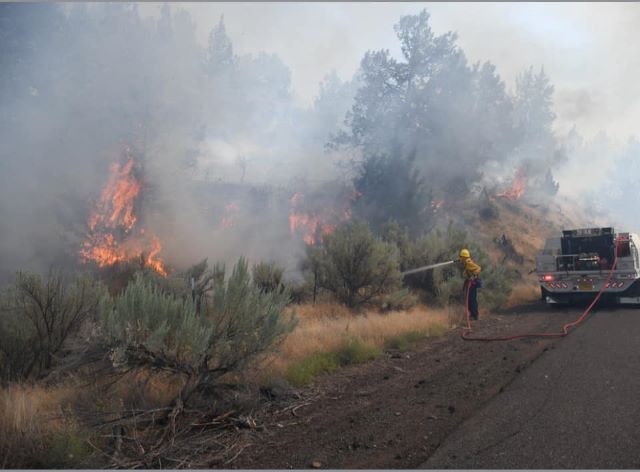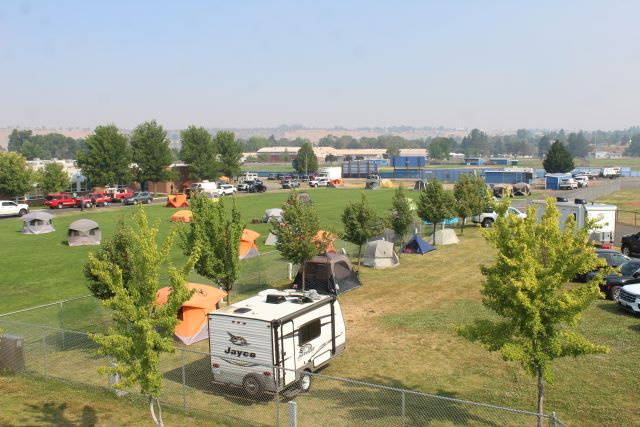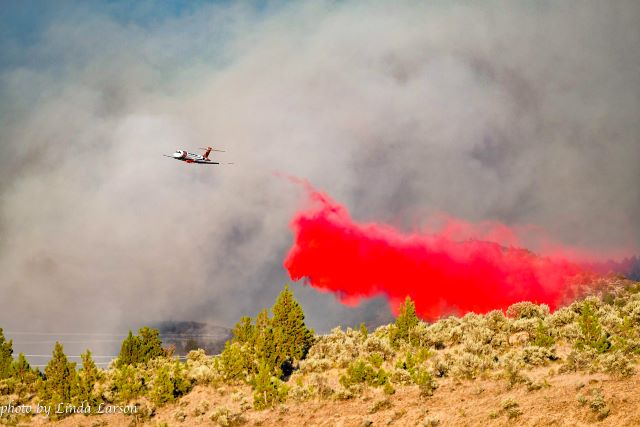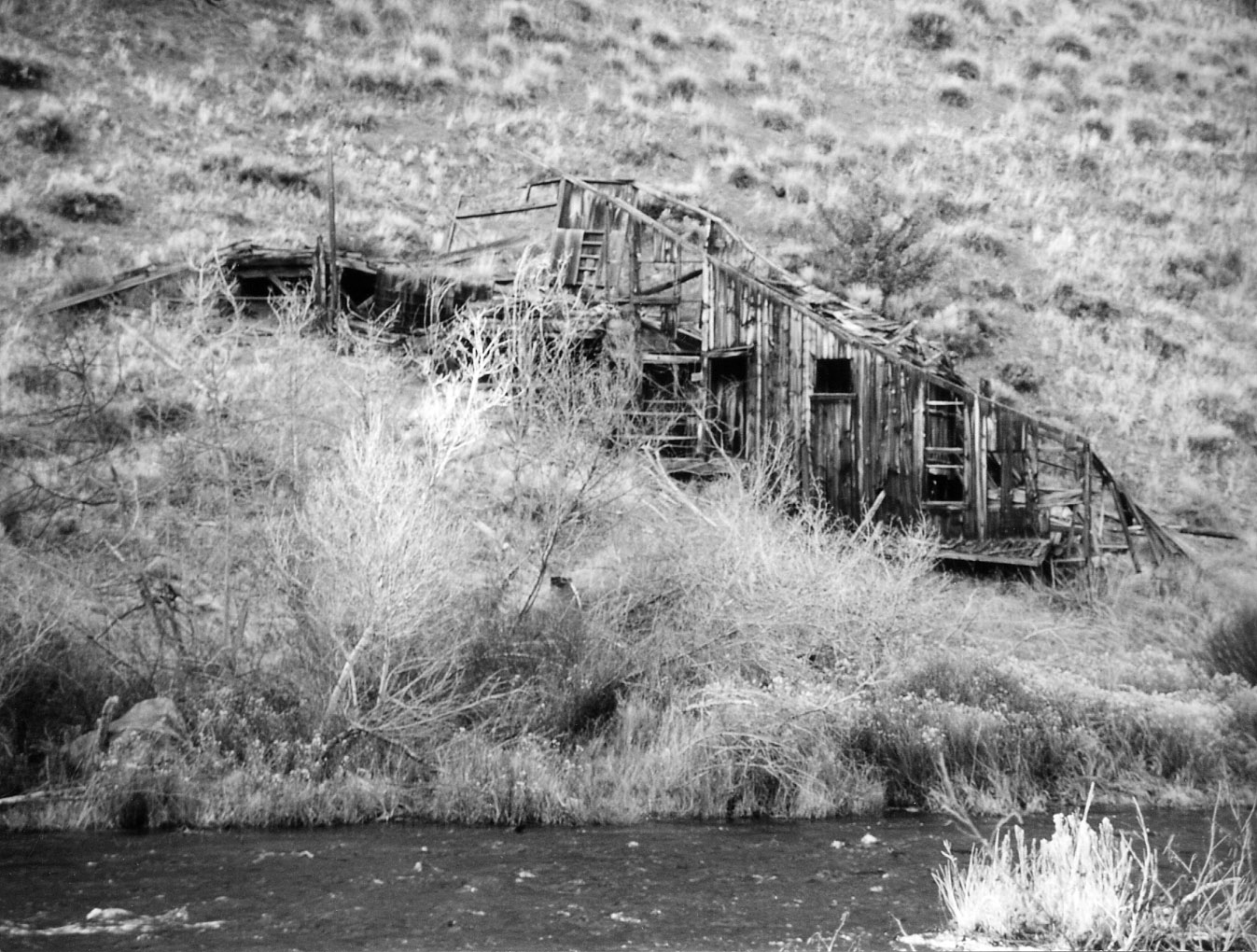Cram fire chars 95,748 acres
Published 4:52 pm Sunday, July 20, 2025

- Firefighter works to keep flames on one side of the road during the Cram Fire, which swept through Jefferson County last week. Photo courtesy of Cram Fire Facebook page.
What became the biggest fire in the United States at the time, the Cram Fire burned through 95,748 acres of mostly grass, sage and juniper country, from southern Waco County to the Grizzly country near the Crook County border.
The fire started Sunday July 13 and erupted under hot days and windy conditions. People in the Ashwood area and surrounds were evacuated Monday, July 14 and several other locations were put on evacuation notice over the week. By Thursday afternoon the Cram Fire was prompting evacuation warning in Madras and in Crook County. Heading into Friday, there was substantial concern that the fire could spread south and reach the Ochocos and the timber country. However, cooling temperatures and lighter winds helped the firefighters control the blaze and stopped its southern advance.
In all, four homes were reportedly destroyed in the blaze, along with six other structures.
Trending
The fire brought in 14 strikes team task forces, eight worked during the day and six at night. Fire fighting efforts featured many aerial retardant drops and hustling dozer line work all week to try to beat back the fire’s growth. In all, the response had 932 people assigned to the fire, 88 engines and 18 hand-crews. Structure firefighting crews were broken into two teams: the orange unit fighting the northern half of the blaze, and the blue team the southern flank, which eventually threatened Madras and the timber country of northern Crook County.
Thanks to nearly a week of firefighters’ steady work around the clock, and cooler, less windy weather conditions, the Cram Fire was 49% contained as of press time Sunday afternoon, July 20, and firefighters contended that the battle had been won. Containment is achieved when fire managers are confident the completed control lines will hold. By Friday, crews were in mop-up phase on the north side and were confident on the more precarious southern flank.
On Saturday, crews continued gridding near the fire’s perimeter, working into the interior to locate and extinguish any remaining heat. In the rugged terrain near Grater Butte and Calf Gulch, hand crews successfully connected sections of dozer and hand line. Favorable weather in the fire’s southeastern spur allowed firefighters to continue to improve lines. Fire behavior that was savage through grass and sage country midweek had moderated substantially by the weekend, with only minimal smoke observed well inside the fire perimeter. Night operations played a key role in scanning for and eliminating hotspots or flare-ups that could threaten containment lines.
On Sunday, crews were continuing to focus work on the southern edge. To reduce materials that have the potential of fueling spot fires, saw crews are thinning juniper trees along fire lines. Wildland crews, supported by engines, were conducting systematic gridding to locate and remove any remaining heat that could affect the integrity of established control lines.
Thanks to the outstanding work by firefighters over the past week and a decreasing threat to homes, the Oregon State Fire Marshal (OSFM) began adjusting its response Sunday. Some structure protection crews and engines were released from the Cram Fire to return to their home districts. Remaining personnel continued working around structures to extinguish hot spots and ensure any lingering threats to homes are addressed.
The confidence of fire managers was also helped by cooling weather forecast for early this week, with a chance of thunderstorms but storm accompanied by showers.
Trending
On Thursday, July 17, officials arranged for a community meeting in Madras, as concerns about potential fire growth was rampant. Jefferson County government also proclaimed a state of emergency on Thursday due to the Cram Fire. However, improved weather conditions on Friday helped turned the meeting into more of an explanation on what has been done instead of preparation for what may have to be done.
At the meeting, held at the Jefferson County Middle School, Dean Lange, the strategic operations chief on the Cram Fire, praised the preparation and organization of local and Central Oregon regional firefighters for outstanding organization and preparedness and initial response.
“You should be proud of the firefighters you have locally,” said Lange. “They are good firefighters.”
Jeff Marszal, who came on board as the Ochoco National Forest supervisor just seven weeks ago, said he knew how difficult it was to live through a wildland fire event. He had lived in Happy Valley, California, during their devastating fires when he and his wife had to evacuate their home.
“A fire like this can make or break a relationship (between land management agencies and communities),” said Marszal. “It’s difficult to have to live through something like this. This was a Full Suppression Fire,” he added. “We are doing everything we can do to put this fire out as soon as possible.”
The Ochoco manages the Crooked River National Grassland, which land impacted by the fire.
Federal and state fire officials also praised the two local Rangeland Fire Protection Associations — the Ashwood-Antelope RFPA and the Grizzly RFPA, made up of civilian volunteers — for effectively assisting in the fire fighting effort.
Cram Fire camps and logistics operations were set up near Willowdale off U.S. Highway 97 and in Madras at the high school and Performing Arts Center.







